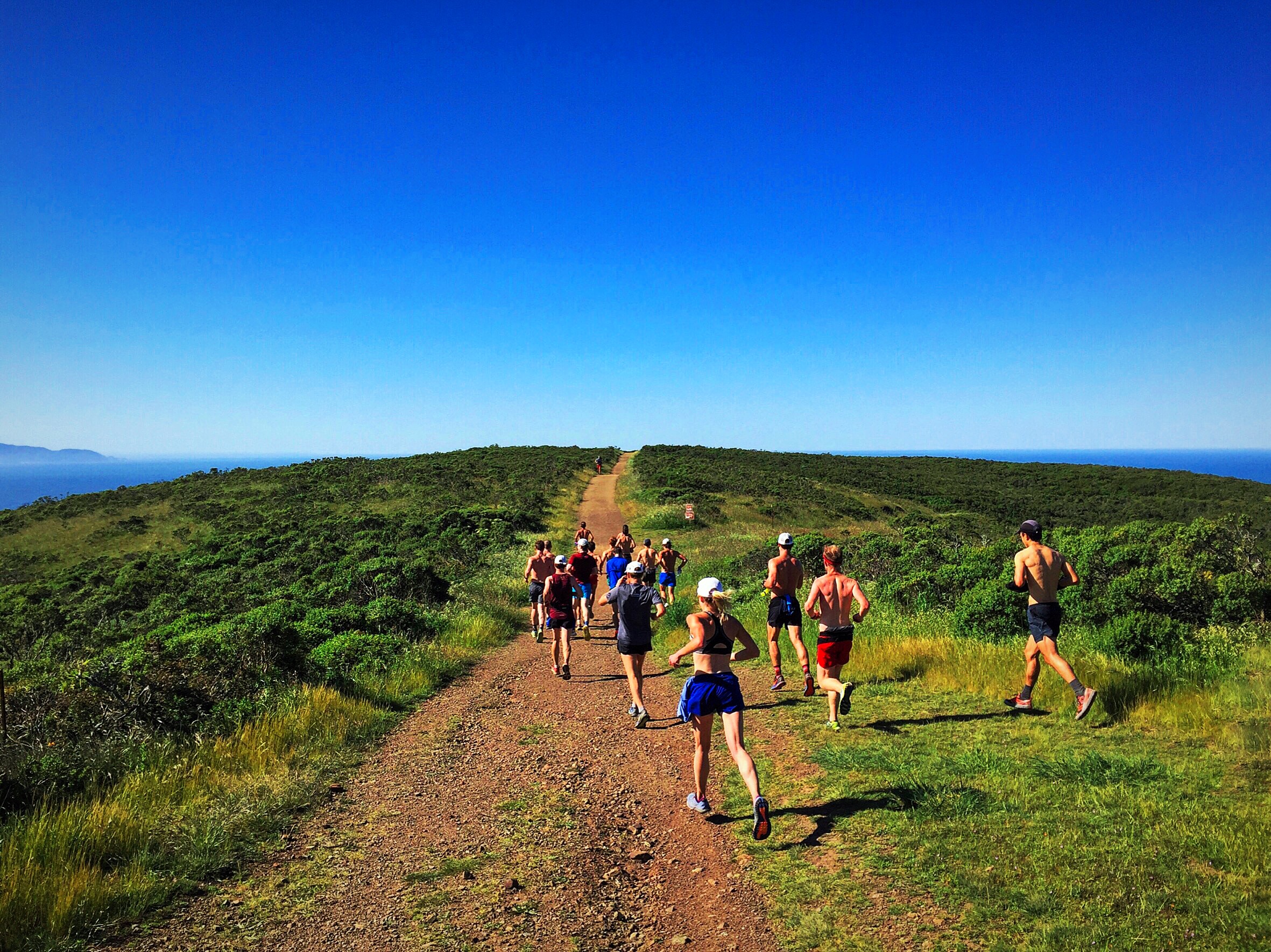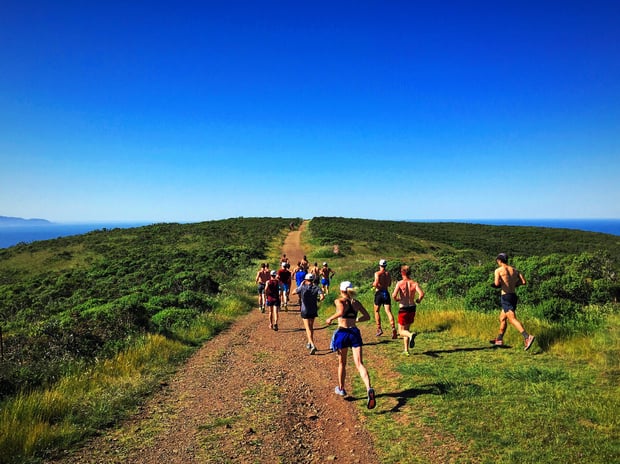How to Beat the Heat in Training and Competition: Part 1 - Acclimatization
Part I: Heat Acclimatization
As the summer temps heat up, so does the competition. With so many high stakes national and international events taking place this summer, athletes are feeling the pressure of competition. If that wasn’t enough, add the environmental demands of heavy, suffocating humidity or that blinding, blistering sun. In this two-part series, I hope to provide some insight into how you can beat the heat and (hopefully) your competition starting with heat acclimatization education and strategies (part I) followed by proper hydration and cooling methods and how to recognize early signs of heat exhaustion, a potentially dangerous clinical scenario (part II).
In 2014, a panel of experts met at Aspetar Orthopaedic and Sports Medicine Hospital in Doha, Qatar, where they discussed the specifics of training and competing in the heat and subsequently wrote a consensus statement. Their conclusions along with data from many other top researchers in the field will be summarized in this two-part series1.
What happens to our body when the temperatures rise?
We know how it feels when we get hot, but what happens on the physiologic level? Figure 1 summarizes the initial response, followed by the adaptive response after acclimatization takes place. To gain better insight about why this happens, "cardiovascular drift" warrants a quick discussion. In temperate climates, for bouts of exercise greater than 15-20 minutes, heart rate increases and stroke volume (volume of blood pumped from your heart with each beat) slowly falls. In warmer climates, the magnitude of cardiovascular drift is more pronounced, and, as a result, performance declines2.
Figure 1: Short- and long-term body responses to heat
*The body core temperature needed to start sweating and for blood vessel dilation to allow increased blood flow is reduced.
** Syncope is defined as a loss of consciousness, sometimes referred to as a “fainting spell”
Heat Acclimatization versus Acclimation
In order to perform one’s best in a competition, the training should ideally simulate race day conditions, which can be a challenge depending on seasonal and geographical variations. During heat acclimation, adaptations develop following repeated heat exposures to artificial or laboratory settings that are stressful enough to cause profuse sweating and elevate skin/core temperatures. Heat acclimatization refers to training in a natural climate (i.e., hot and either humid or dry conditions) that elicit similar responses to acclimation. Although acclimatization is preferred because it allows athletes to experience the natural heat stress of competition, acclimation can be very beneficial if done properly3. For the remainder of this article, “acclimatization” will be used, but most of the scenarios can be applied to as well.
Acclimatization Techniques
How long?
Within the first week, athletes will start to experience the adaptation changes listed previously in Figure 1, followed by slower changes in the subsequent two weeks, detailed in Figure 2. Studies show it may require six to ten days to achieve near complete cardiovascular and sweat-related adaptation (i.e., you adapt by losing less salt with your sweat) and around two weeks to optimize aerobic performance1.
Figure 2: Heat Adaptation Curves

Figure from Periard et al (2015) 2
Training Approach
The goal of heat acclimatization is training that increases body (core and skin) temperature to evoke profuse sweating and an increase in skin blood flow4,5. The magnitude of adaptation depends on intensity, duration, frequency and number of heat exposures1. Recent research has shown that a more rapid and complete adaptation can be obtained by using a controlled “hot climate” regimen where intensity is controlled through core temperature or heart rate monitoring. Sweat rate and sodium content, core temperature, and plasma volume are other markers, but are more difficult to measure.
Table 1 shows examples of heat acclimatization strategies based on different time points in the training season. Although this table is merely meant to act as an outline, it can be a helpful starting point for athletes or coaches.
Table 1: Acclimatization Techniques

Table adapted from Racinais et al1
Dry or Humid?
It is recommended that athletes acclimatize to the environment in which they will compete. Older studies do show that heat acclimatization in dry heat improves exercise in humid heat and vice versa6,7. However, acclimatization in humid heat induces higher skin temperatures and circulatory adaptations in dry heat (theory being that the more parts of your body that sweat efficiently, the greater rate of evaporative heat loss and subsequent cooling of the body). It may also may be beneficial to train in humid heat at the end of a dry heat acclimatization, although there are no large studies to prove this strategy.
How long will the effects last?
After removed from the heat training, how long do the benefits last (i.e., what’s the rate of decay)? Heat adaptations decay at different rates and it’s been shown that adaptations, which happen the fastest, are lost more rapidly (refer to Figure 2 for timeline of adaptations). Fortunately, the overall rate of decay happens more slowly than rate of adaptation with maintenance of the majority of benefits for two to four weeks 8,9. Further, during this maintenance phase, a return to a hot environment shows a faster re-acclimatization.
Train Hot, Compete Temperate?
Studies have also shown that heat training (both in-season and pre-season) can improve physical performance in more temperate climates as long as the quality of the training is not compromised. More experienced athletes may experience the greatest benefit 10.
Take Home Points on Heat Acclimatization
As with most training, each athlete is unique in the rate and degree of acclimatization response and the approach should be customized to the athlete. Below summarizes how to perform one’s best in the
Athletes should acclimatize to the environment in which they will compete, although some studies show dry heat training improves exercise in humid heat and vice versa.
Heat acclimatization leads to body adaptations, which lower physiologic strain and improve exercise capacity in the heat.
Markers such as heart rate indices can be used to closely monitor acclimatization response.
Training sessions should last at least 60 min/day and induce an increase in body core and skin temperatures, as well as stimulate sweating.
Although early adaptations are obtained within the first few days, the bigger physiological adaptations are not complete until ∼1 week, with the ideal time frame lasting 2 weeks in order to maximize all benefits.
The overall rate of decay happens more slowly than rate of adaptation with maintenance of the majority of benefits for 2-4 weeks.
Practicing proper heat acclimatization strategies can provide that competitive edge needed for a successful performance. Equally important is an effective approach to hydration and cooling, along with recognizing early signs of heat exhaustion, all of which will be discussed in part II of this summer series on how to beat the heat.
References
1. Racinais S, Alonso J M, Coutts A J, Flouris A D, Girard O, González Alonso J, Hausswirth C, Jay O, Lee J K, Mitchell N, Nassis G P, Nybo L, Pluim B M, Roelands B, Sawka M N, Wingo J E, Périard J D. 2015. Consensus recommendations on training and competing in the heat. Scandinavian journal of medicine & science in sports 25 Suppl 1 : 6-19.
2.Périard JD, Racinais S, Sawka MN. Adaptation and mechanisms of human heat acclimation. Scand J Med Sci Sports 2015: 25 (Suppl. 1): 20–38.
3. Wenger CB. Human heat acclimatization. In: Pandolf KB, Sawka MN, Gonzalez RR, eds. Human performance physiology and environmental medicine at terrestrial extremes. Indianapolis, IN: Benchmark Press, 1988: 153–197.
4. Sawka MN, Wenger CB, Pandolf KB. Thermoregulatory responses to acute exercise-heat stress and heat acclimation. In: Fregly MJ, Blatteis CM, eds. Handbook of physiology, section 4, environmental physiology. New York: Oxford University Press,1996: 157–185.
5. Sawka MN, Leon LR, Montain SJ, Sonna LA. Integrated physiological mechanisms of exercise performance, adaptation, and maladaptation to heat stress. Compr Physiol 2011: 1:1883–1928
6. Bean WB, Eichna LW. Performance in relation to environmental temperature. Reactions of normal young men to simulated desert environment. Fed Proc 1943: 2: 144–158.
7. Eichna LW, Bean WB, Ashe WF, Nelson NG. Performance in relation to environmental temperature. Reactions of normal young men to hot, humid (simulated jungle) environment. Bull Johns Hopkins Hosp 1945: 76: 25058.
8. Daanen HA, Jonkman AG, Layden JD, Linnane DM, Weller AS. Optimising the acquisition and retention of heat acclimation. Int J Sports Med 2011: 32: 822–828.
9. Flouris AD, Poirier MP, Bravi A, Wright-Beatty HE, Herry C, Seely AJ, Kenny GP. Changes in heart rate variability during the induction and decay of heat acclimation. Eur J Appl Physiol 2014: 114: 2119–2128.
10. Racinais S, Buchheit M, Bilsborough J, Bourdon PC, Cordy J,Coutts AJ. Physiological and performance responses to a training-camp in the heat in professional Australian football players. Int J Sports Physiol Perform 2014: 9: 598–603.
Disclaimer: This blog is for informational purposes only. Doctors cannot provide a diagnosis or individual treatment advice via e-mail or online. Please consult your physician about your specific health care concerns.
About the Author

Dr. Emily Kraus is a BridgeAthletic performance team contributor where she focuses on topics that are at the forefront of athletics and medicine. She is the incoming Stanford non-operative sports medicine fellow in Physical Medicine and Rehabilitation. Emily has provided medical coverage for events such as the USATF National Track and Field Championships and is the research coordinator for a multi-center study focused on prevention of stress fractures in division I collegiate runners. Emily has finished six marathons, recently ran (and won) her first 50km trail ultramarathon, and placed 56th female in the 2016 Boston Marathon. Emily is passionate about injury prevention, running biomechanics, and the promotion of health and wellness.
Related Posts

The Best Bench Press Variation You’re...
This post is part of our Coaches Corner series with Taylor Rimmer. Taylor is NSCA-CPT, StrongFirst...

Does Powerlifting Harm Heart Health?
A recent study has discovered that a 12-week supervised strength training program (SSTP) may result...
-1.png)
Barefoot Running: Is It For You? |...
Run Free: Consider Less Cushion
Updated October 2020:
With more athletes looking for ways to...



